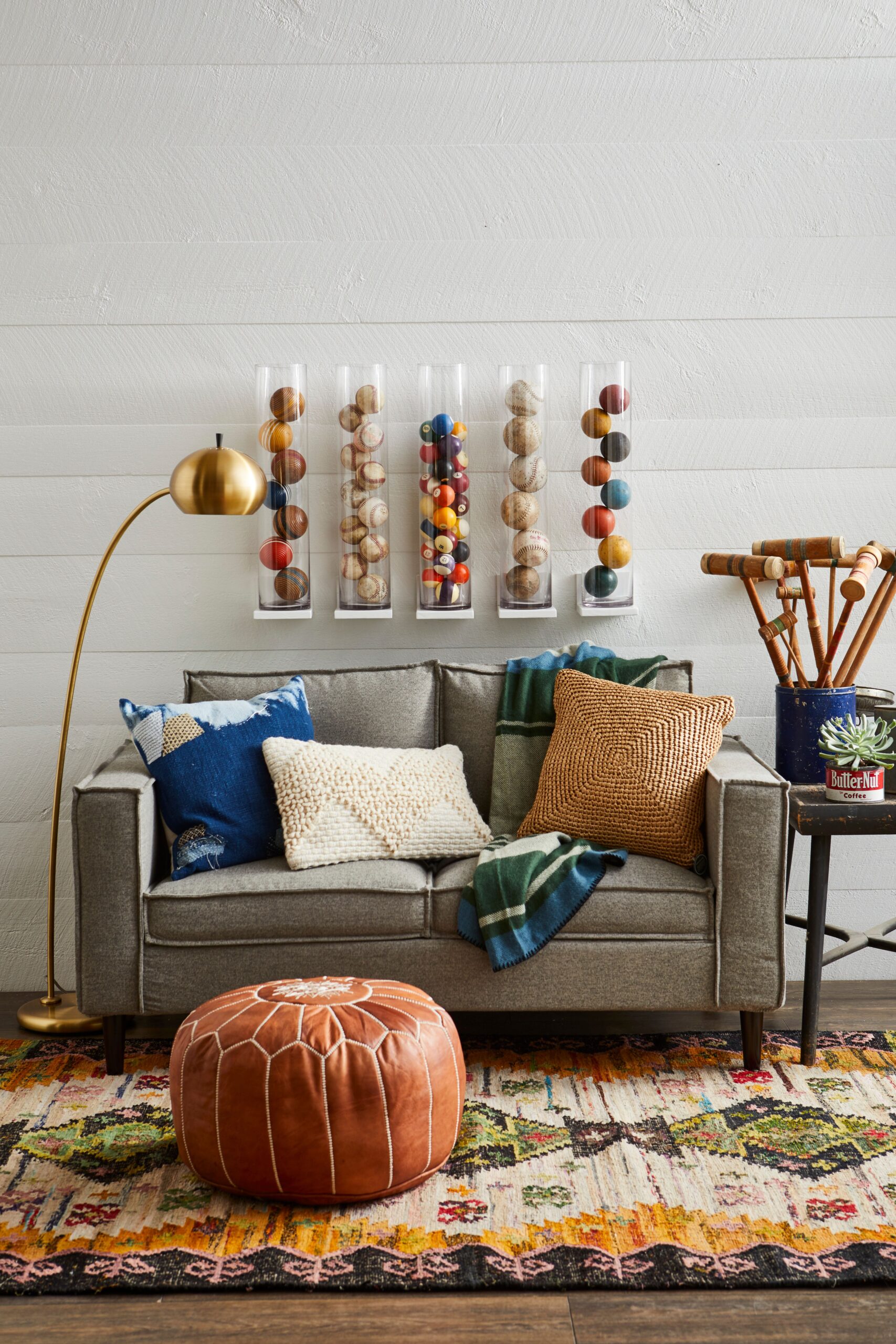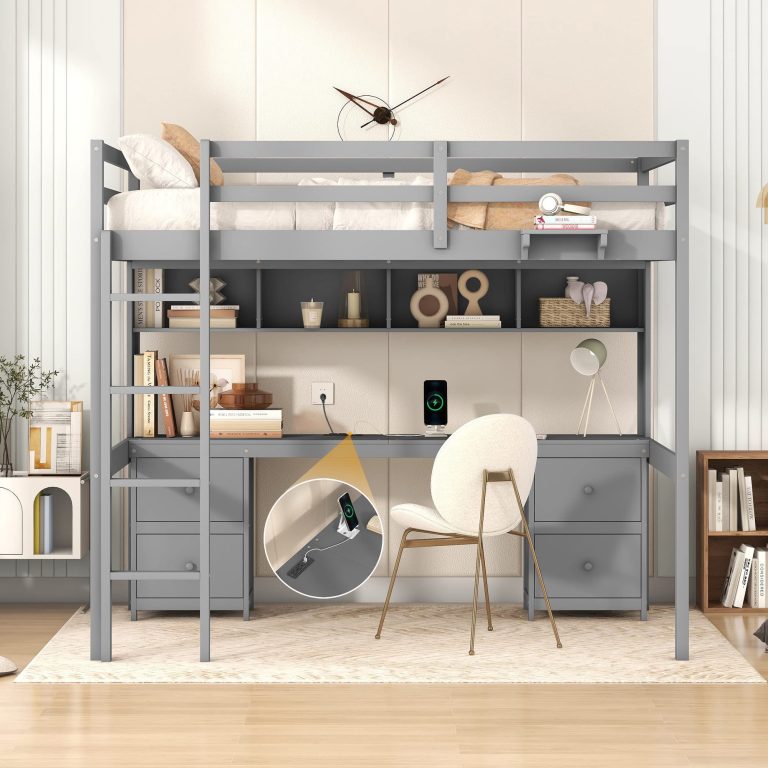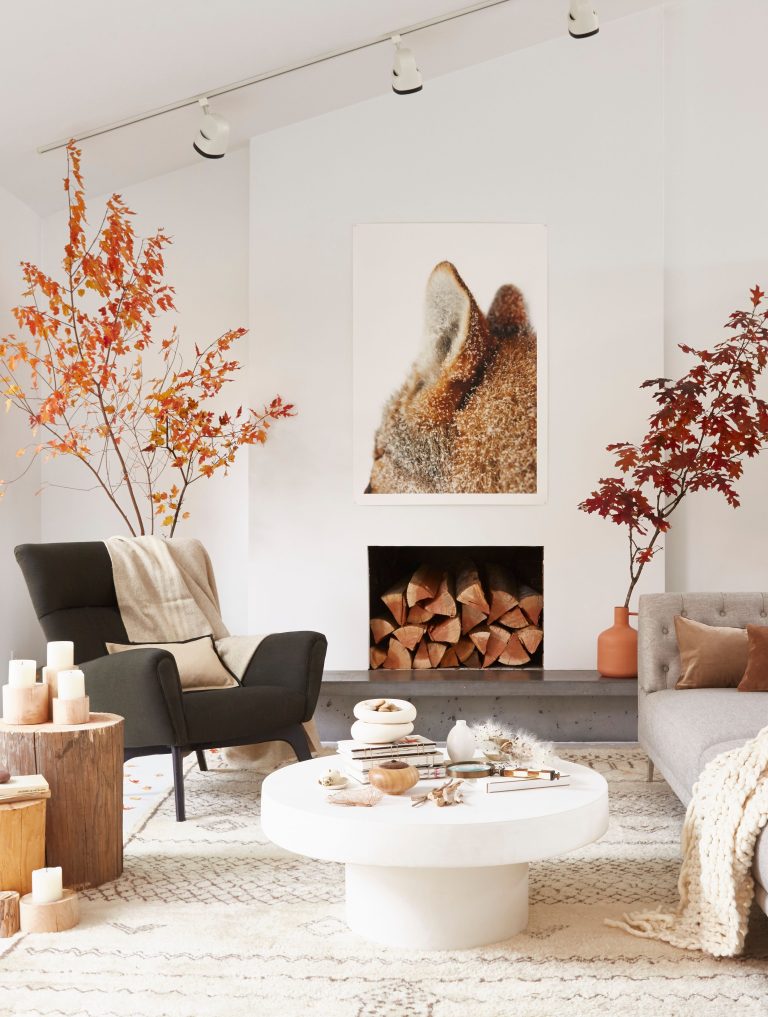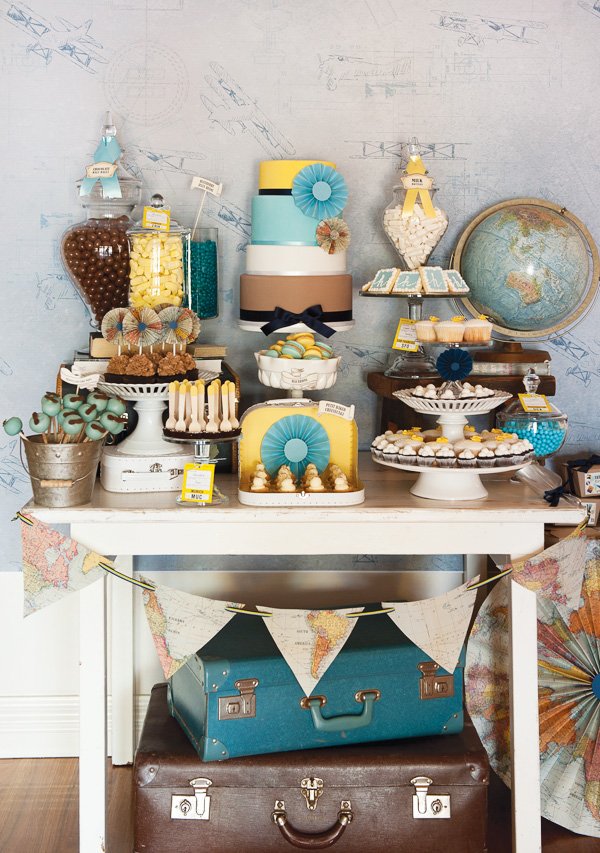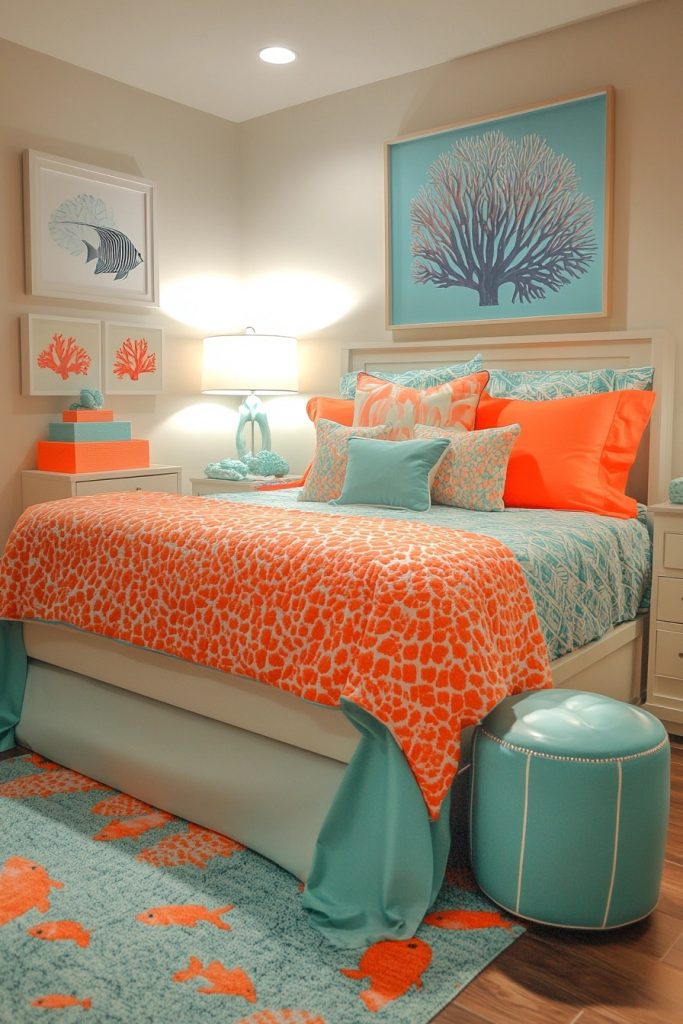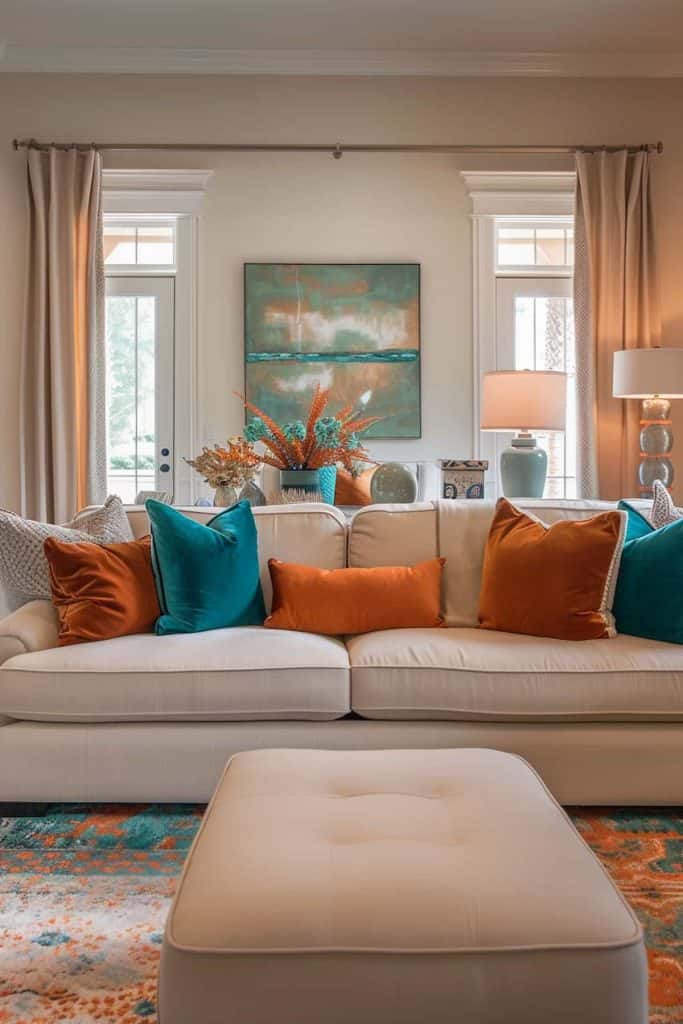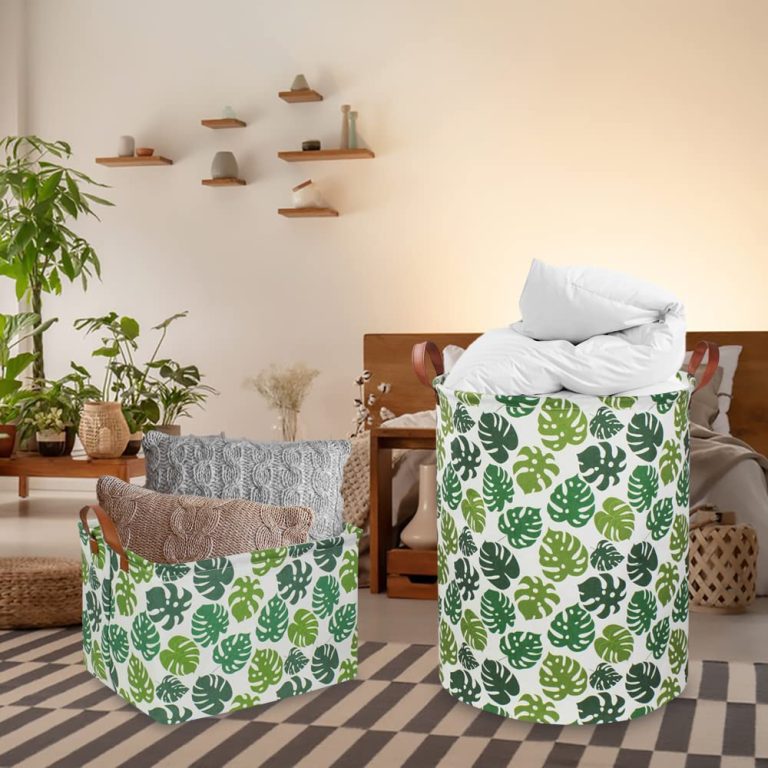17 Small Living Room Decor Ideas to Maximize Style and Space
Small living rooms can feel like a design challenge, but they offer an exciting opportunity to get creative with layout, furniture, and decor choices. Whether you’re working with a tiny apartment, a cozy cottage, or a compact corner in a larger space, the right decorating ideas can help you make the most of every square inch.
In this guide, you’ll find 17 thoughtfully curated small living room decor ideas that balance practicality with personality. Each idea is packed with detailed tips to help you create a space that’s stylish, functional, and completely you.
1. Opt for Light and Airy Color Palettes
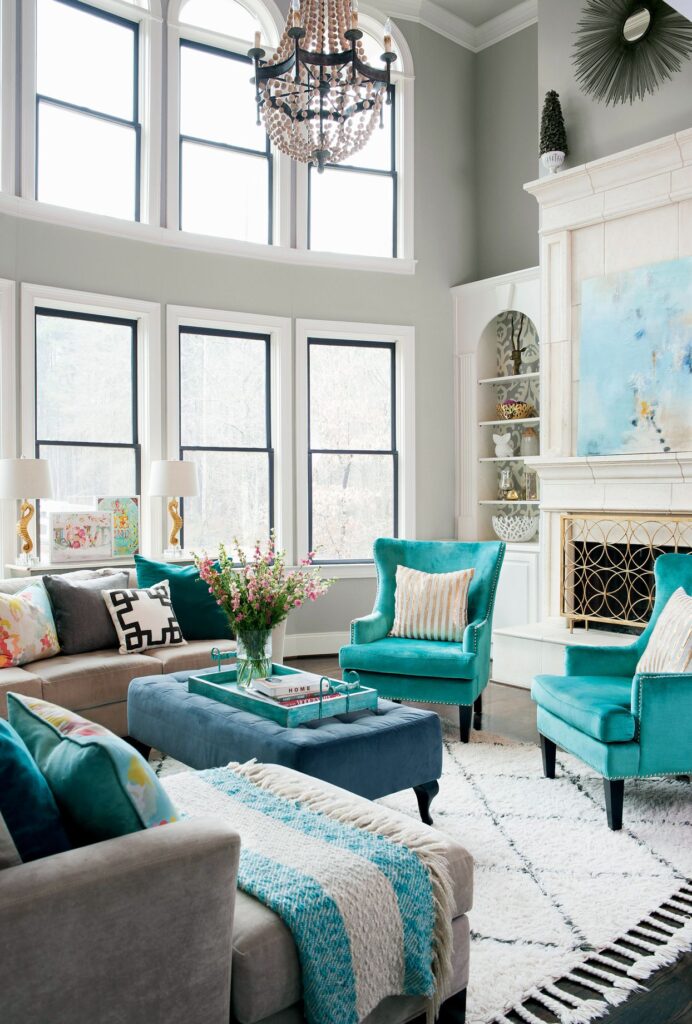
Light colors are your best friend when it comes to making a small living room feel bigger and brighter. Soft neutrals like white, beige, cream, and pale gray reflect natural light, giving the illusion of a more spacious environment.
Instead of heavy, dark walls that might close in the space, consider painting your walls a crisp white or a calming ivory tone. This doesn’t mean your room has to feel sterile—layer in texture with natural fabrics like linen, rattan, or cotton to keep things warm and inviting.
You can also introduce subtle pops of color through throw pillows, rugs, or art. Light blues, sage greens, and blush pinks work beautifully to add personality without overwhelming the space.
Don’t forget about the ceiling—painting it a shade lighter than the walls can visually lift the room. Combine this with sheer curtains or no curtains at all to let in maximum light.
This approach isn’t just about visual tricks—it also sets a serene, fresh tone that makes your living room feel like a peaceful retreat.
2. Embrace Multi-Functional Furniture
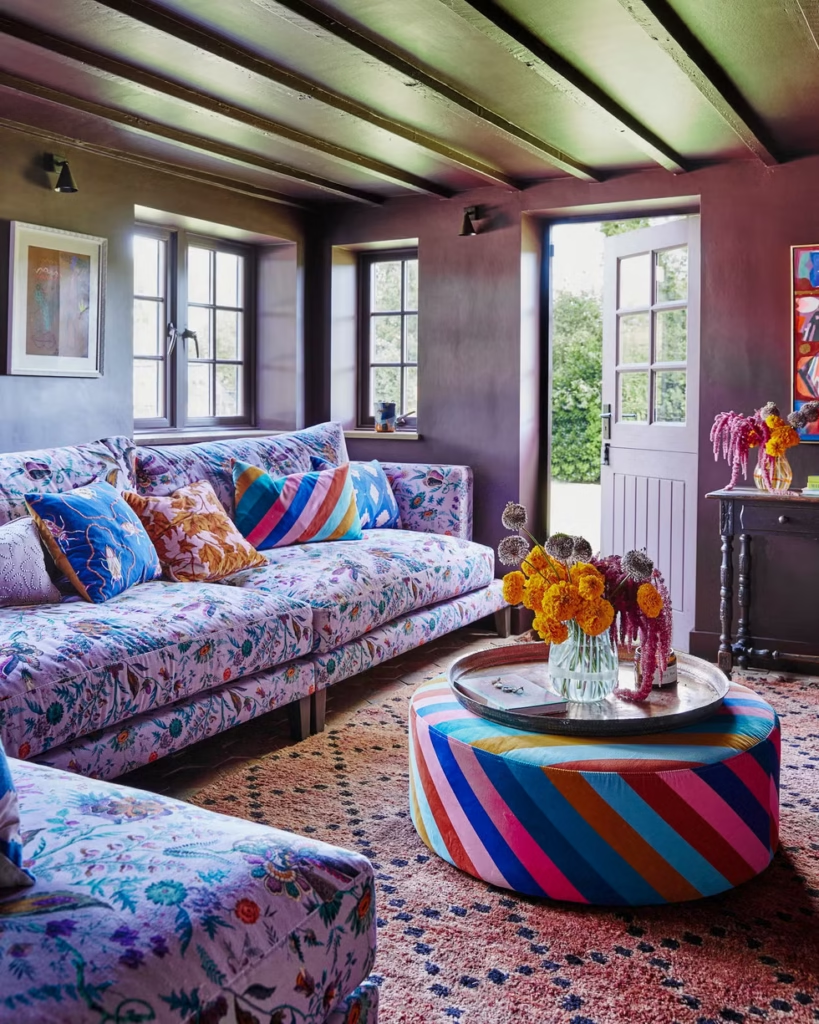
In a small living room, every piece of furniture needs to work overtime. Multi-functional pieces are a game-changer, helping you save space while adding convenience and style.
Consider a storage ottoman that can double as a coffee table and extra seating. Or a sleeper sofa for guests that also includes built-in drawers underneath. Look for nesting tables that can be pulled out when needed and tucked away when not in use.
Fold-out desks, lift-top coffee tables, and storage benches are also great additions. The key is to choose items that offer flexibility and tuck neatly into your layout without adding clutter.
A great tip is to look for furniture with clean lines and legs that elevate the piece off the ground. This creates a more open, breathable look, preventing your room from feeling boxy.
Multi-functional furniture not only maximizes utility but also allows you to keep your space tidy and stylish—two major wins in a small living room.
3. Go Vertical with Wall Decor
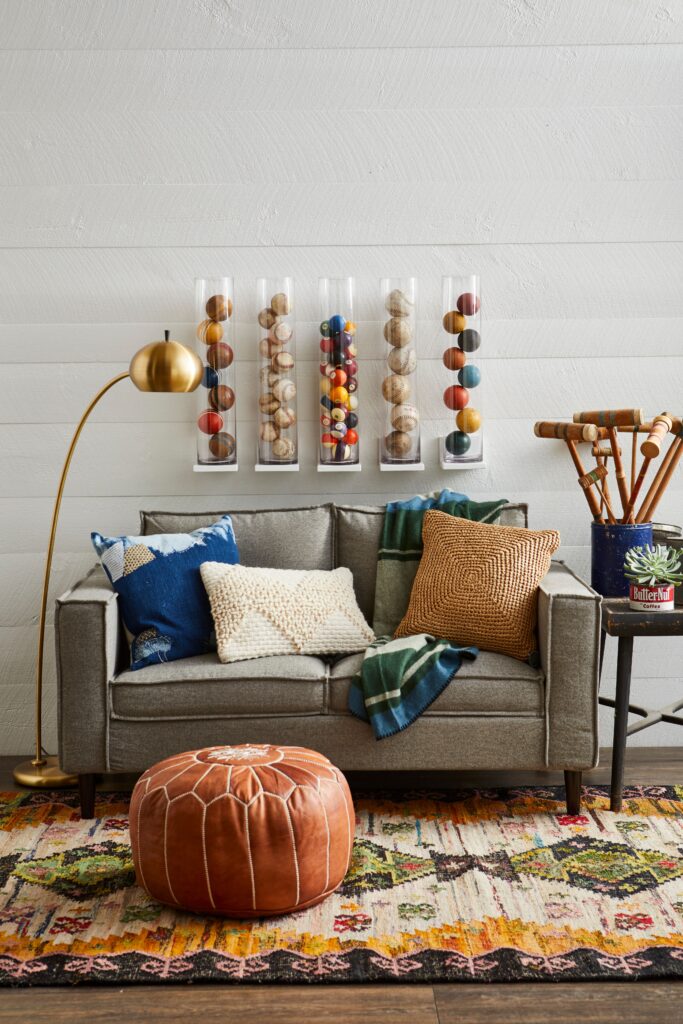
When you’re short on floor space, it’s time to think vertically. Wall space is an often-overlooked canvas for both storage and style.
Install floating shelves to display books, plants, or decorative objects without taking up floor space. Wall-mounted lighting—like sconces or swing-arm lamps—can free up space on side tables and add a stylish touch.
Gallery walls are another fantastic option. A collection of art or photographs arranged vertically draws the eye upward and adds visual interest without crowding the room.
You can also hang tall mirrors or lean them against the wall to reflect light and give the impression of greater depth. Mirrors are especially effective in tight spaces, doubling the visual space and bouncing light around the room.
Utilizing vertical space is one of the most effective ways to add personality and function to a small living room without sacrificing square footage.
4. Choose a Statement Rug
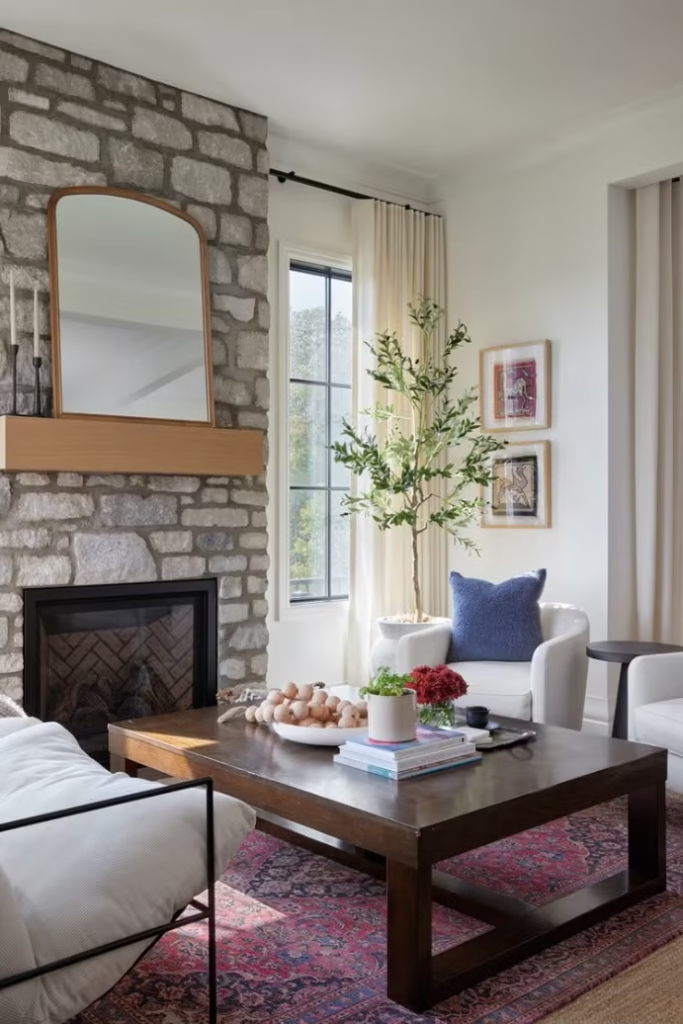
A rug can anchor a space and pull together your living room decor beautifully—even in a small space. Opt for a large area rug that extends under the front legs of your furniture to create a cohesive, grounded look.
Avoid rugs that are too small, as they can make the room feel even smaller. Instead, go bold with patterns or textures that add depth and visual interest. Geometric designs, stripes, or vintage-inspired motifs work well in compact spaces.
If your furniture is neutral, a colorful or patterned rug can provide a pop of personality. On the other hand, if your furniture already makes a statement, a subtle rug with soft tones can balance the look.
Natural fiber rugs like jute or sisal can also add texture and warmth while maintaining a minimalist, modern feel.
The right rug not only defines your space but also adds comfort underfoot—making your living room feel cozy, curated, and complete.
5. Add a Mirror (or Two)
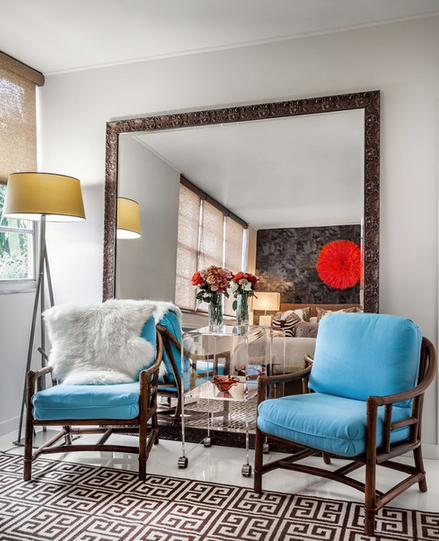
Mirrors are a well-loved design trick for small spaces, and for good reason. They reflect light, open up the room, and add a stylish focal point to your decor.
Hang a large mirror across from a window to bounce daylight around the room. This brightens the space naturally and makes it feel more expansive.
Round mirrors can soften sharp corners in boxy rooms, while full-length leaning mirrors offer drama and function without taking up valuable wall space.
You can also create a mirror gallery wall with different shapes and finishes for an eclectic, artistic feel. Choose mirrors with decorative frames to enhance your overall style, whether it’s vintage, boho, or modern.
No matter how you incorporate them, mirrors bring dimension and sparkle to a small living room—instantly elevating your decor.
6. Use Transparent or Lucite Furniture
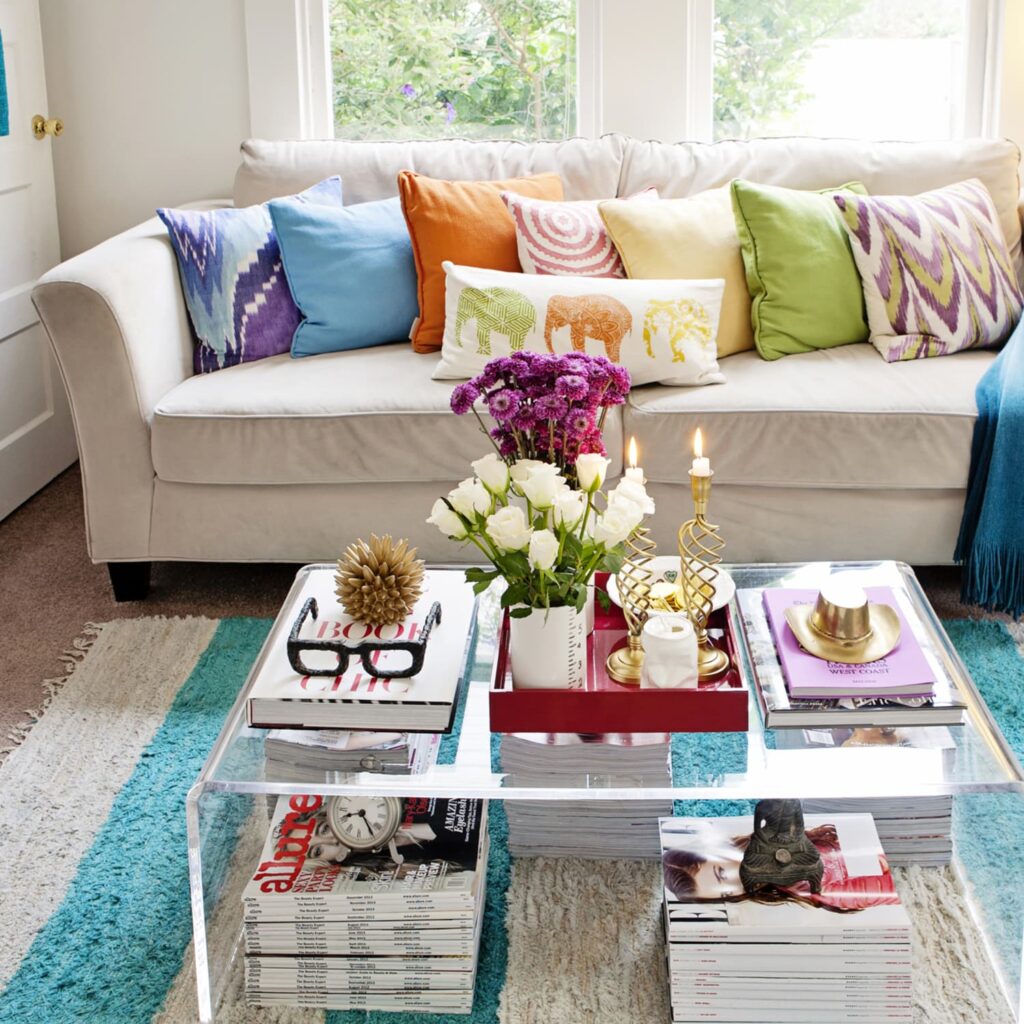
Clear furniture, such as Lucite or glass pieces, can be a lifesaver in a small living room. Because they’re see-through, they visually disappear, making your space feel open and uncluttered.
A clear coffee table, for example, still serves its functional purpose without blocking the visual flow of the room. Pair it with a light-toned rug and slim-profile furniture to enhance the effect.
Lucite side tables, console tables, or even dining chairs (if your living room is also a dining area) can help you maintain functionality without sacrificing style.
This type of furniture is especially useful in modern or minimalist spaces where you want to keep things sleek and streamlined.
While they may seem delicate, high-quality acrylic and tempered glass pieces are surprisingly durable and easy to clean—making them practical as well as beautiful.
7. Incorporate Vertical Storage Solutions
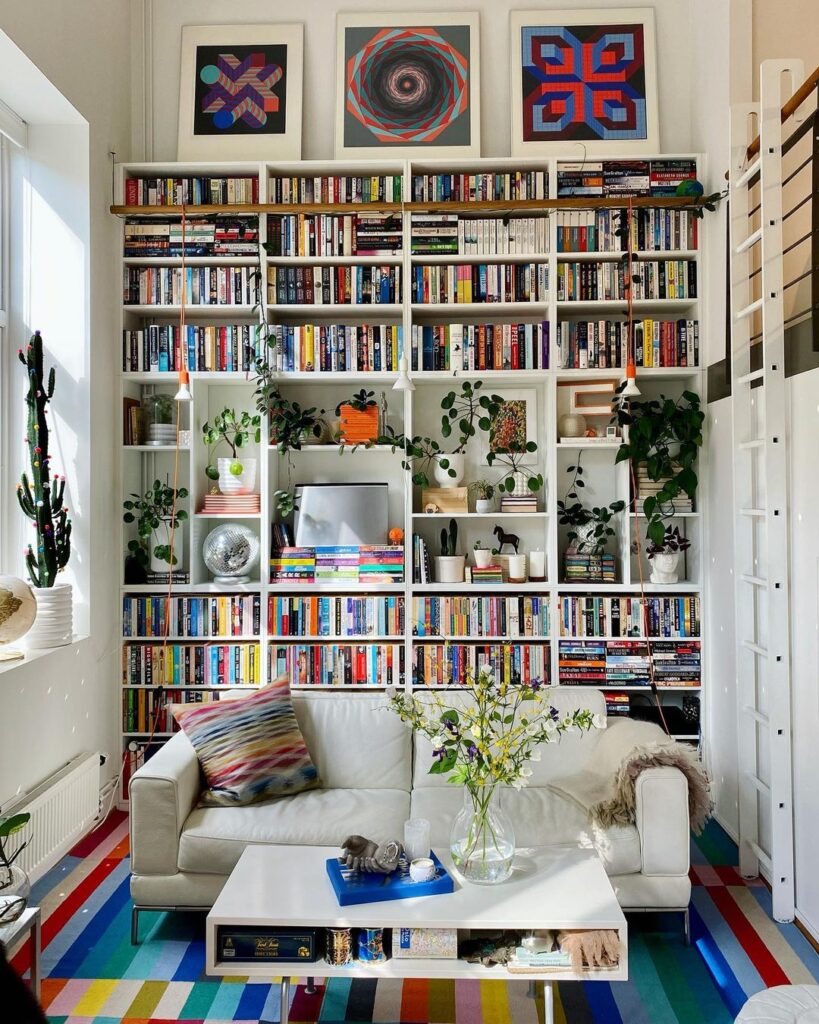
Clutter is the enemy of small spaces, but storage doesn’t have to be bulky or boring. Vertical storage options like bookcases, ladder shelves, and tall cabinets can help you make the most of limited square footage.
Choose shelving units that stretch toward the ceiling to draw the eye upward and give the illusion of height. Use baskets or bins to organize smaller items while keeping things tidy.
Built-in storage can be particularly effective. If you’re able to install shelving around a doorway or above a sofa, you’ll add storage without losing floor space.
You can also get creative with wall-mounted crates, hanging magazine racks, or even pegboards with customizable hooks and shelves.
Vertical storage is all about keeping the room feeling open while giving you a place to stash essentials, display treasures, and stay organized.
8. Use Slim, Low-Profile Furniture
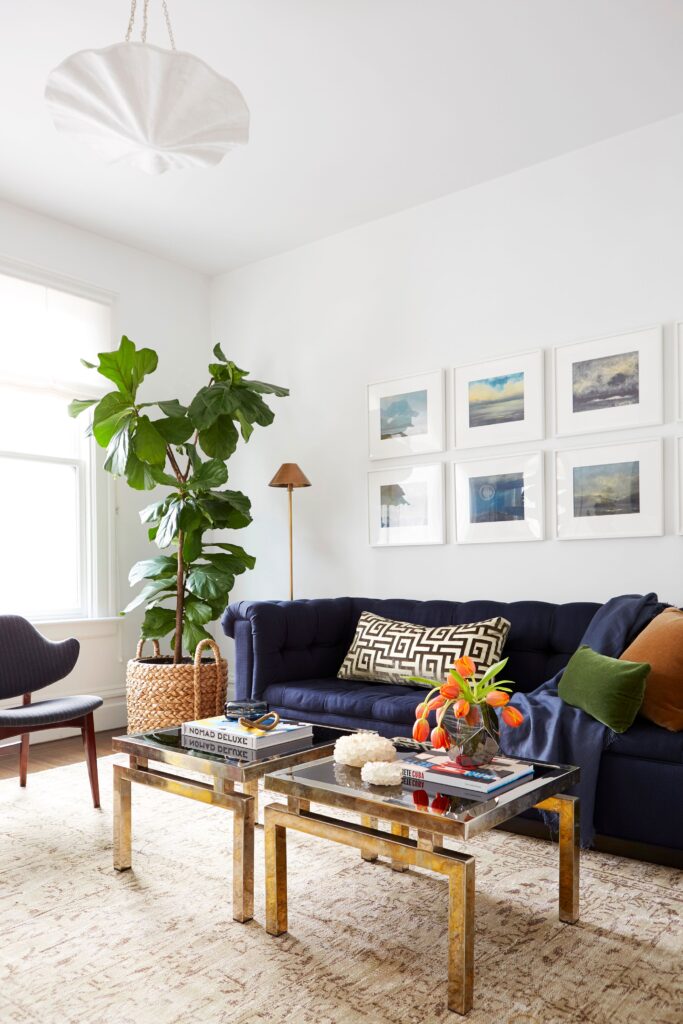
When space is tight, scale is everything. Bulky furniture can overwhelm a small room, making it feel cramped and cluttered.
Instead, opt for slim, low-profile pieces that leave plenty of breathing room. A streamlined loveseat or apartment-sized sofa will give you seating without taking up half the room.
Look for armless chairs or furniture with narrow frames. Pieces that sit lower to the ground can also help a ceiling feel higher, creating a more open atmosphere.
Glass or metal-legged tables create a lighter footprint, while open-sided furniture helps maintain visual flow.
This approach is especially effective in modern and Scandinavian-inspired interiors, where clean lines and thoughtful proportions are key.
Choosing the right furniture is one of the most important decisions you’ll make in a small living room—so think sleek, airy, and perfectly scaled to your space.
9. Hang Curtains High and Wide
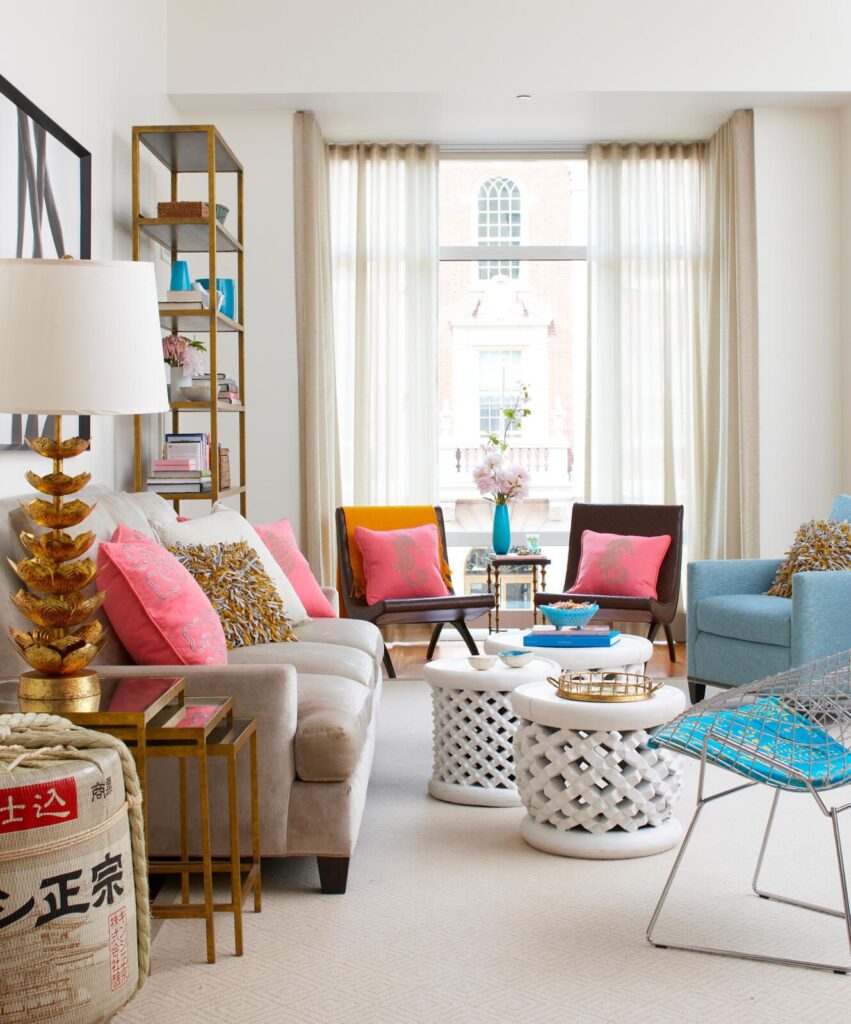
Curtains do more than just provide privacy—they can completely transform how your room looks and feels.
In a small living room, hang your curtains as high above the window as possible—ideally just below the ceiling—and extend the rods a few inches past each side of the window.
This draws the eye upward and creates the illusion of larger, taller windows, making the room feel bigger and more open.
Choose lightweight fabrics like linen or cotton in light colors to keep the look breezy and elegant. Sheer curtains are great for filtering light while still maintaining privacy.
Avoid heavy drapes or dark materials, which can weigh down the space. Instead, think light, long, and flowing.
This simple trick not only enhances your window area but also adds softness and sophistication to your overall decor.
10. Create a Cozy Reading Nook
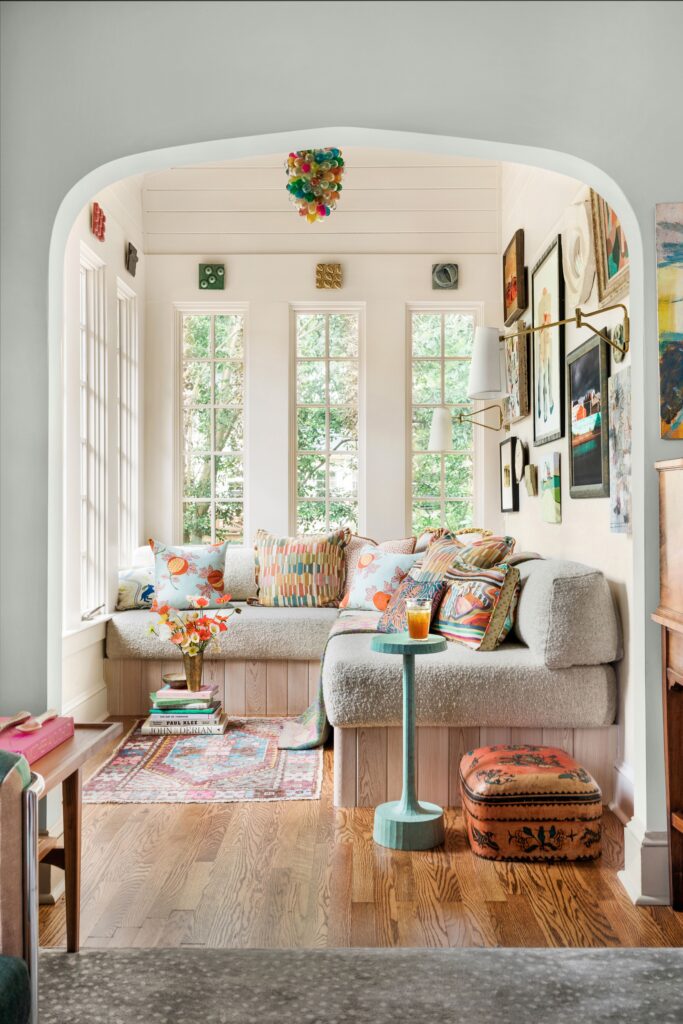
Even the smallest living rooms can benefit from a designated cozy corner. A reading nook adds charm, function, and a touch of personality to your space.
Choose a compact armchair or chaise lounge that fits comfortably in a corner or by a window. Pair it with a small side table and a floor lamp or wall sconce to complete the setup.
Add layered textiles like a soft throw blanket and a few plush pillows to make the area inviting. A wall-mounted bookshelf or a floating shelf with your favorite reads gives the nook purpose without consuming precious floor space.
You can define the area further with a small rug to anchor the corner visually. The nook can also double as extra seating when you have guests.
Not only does a reading nook offer a stylish break from the rest of your furniture arrangement, but it also creates a peaceful escape for you to relax, unwind, and recharge—all without needing much room at all.
11. Use Large Art to Maximize Impact
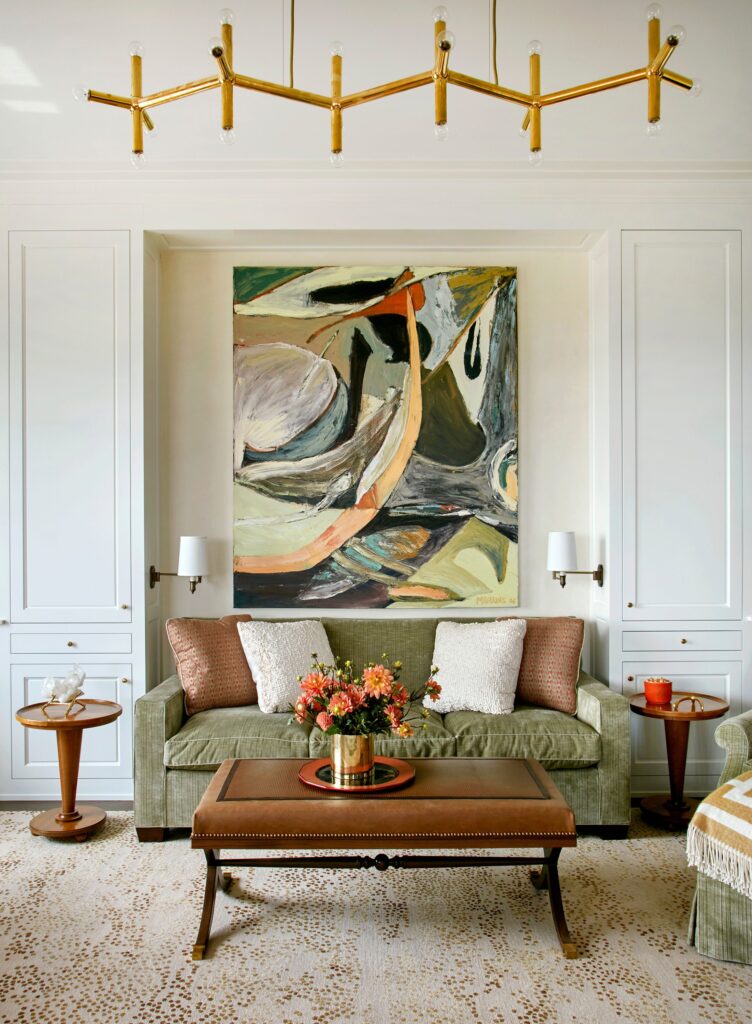
Small living rooms don’t need small artwork. In fact, one or two large-scale art pieces can actually make your room feel more expansive and cohesive.
Oversized art creates a focal point that draws the eye upward and outward, giving the illusion of more space. A bold abstract canvas, a serene landscape, or a black-and-white photograph can anchor your room and express your personal style.
When choosing your artwork, look for colors that complement your palette and themes that add to your room’s mood. A single dramatic piece can do more for a small room than a clutter of tiny ones.
Place your artwork strategically above a sofa, fireplace, or console to balance out furniture and bring symmetry to the space.
This design choice adds personality and sophistication while enhancing the room’s dimensions—proof that big things can work beautifully in small spaces.
12. Incorporate Built-In or Floating Elements
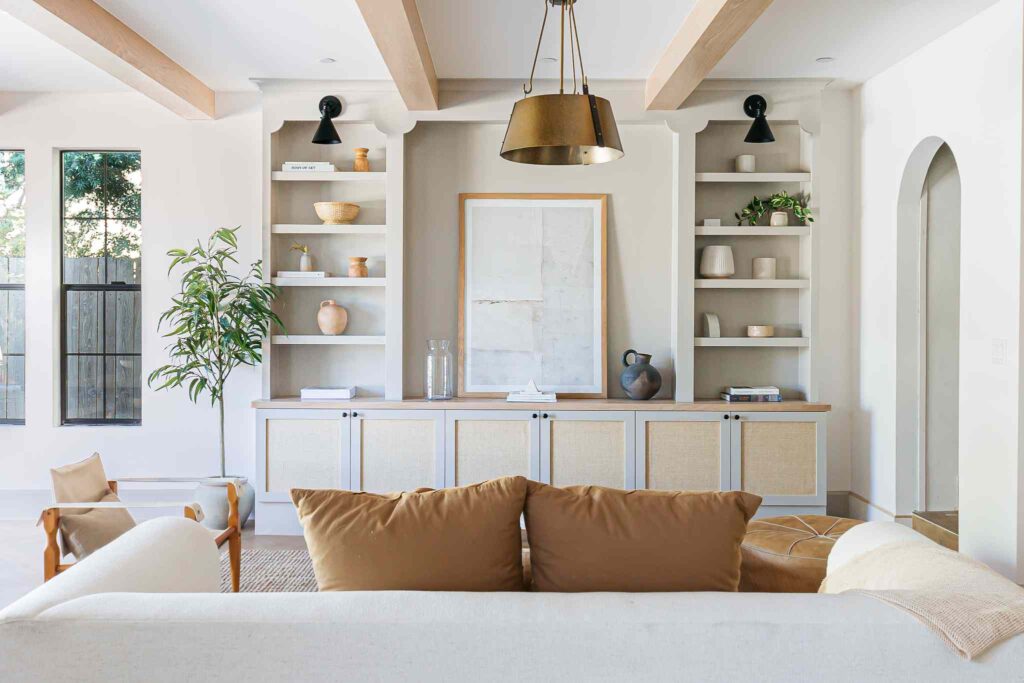
If you’re looking to add storage or style without crowding your room, built-in and floating elements are a smart choice. They keep your space functional while preserving valuable floor area.
Floating shelves and wall-mounted consoles give you storage for books, décor, or electronics, all while maintaining an open, airy look.
Built-ins, like a recessed media center or wall-to-wall bookshelves, provide ample storage without protruding into your room’s footprint. These solutions are especially ideal for oddly shaped rooms or areas with sloped ceilings.
Custom built-ins can also double as seating, such as a window bench with storage underneath—a perfect mix of comfort and utility.
Whether you go the DIY route or hire a carpenter, these features blend seamlessly into your layout, making your small living room feel more like a thoughtfully designed retreat than a cramped corner.
13. Add Pops of Greenery
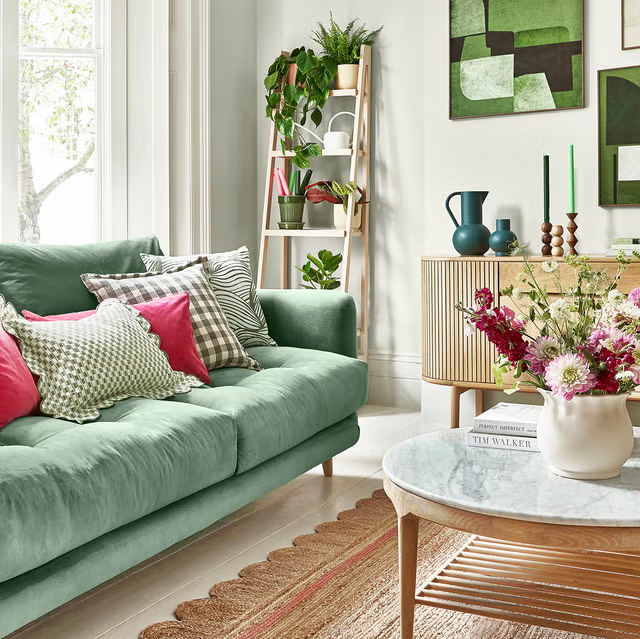
Plants are an easy and affordable way to breathe life into a small living room. They add texture, color, and a sense of tranquility, no matter your design style.
Choose compact plants like pothos, succulents, snake plants, or ZZ plants that thrive indoors with minimal care. Place them on shelves, window sills, or in hanging planters to avoid using up precious floor space.
If you have a sunny spot, a small fiddle leaf fig or monstera can serve as a sculptural element and natural focal point.
You can also incorporate vertical gardens or wall-mounted planters for a modern, space-saving twist.
The natural color and organic shapes of plants soften hard lines and make your living room feel more relaxed, fresh, and full of life. It’s one of the simplest ways to elevate your decor instantly.
14. Keep It Clutter-Free with Minimalist Design
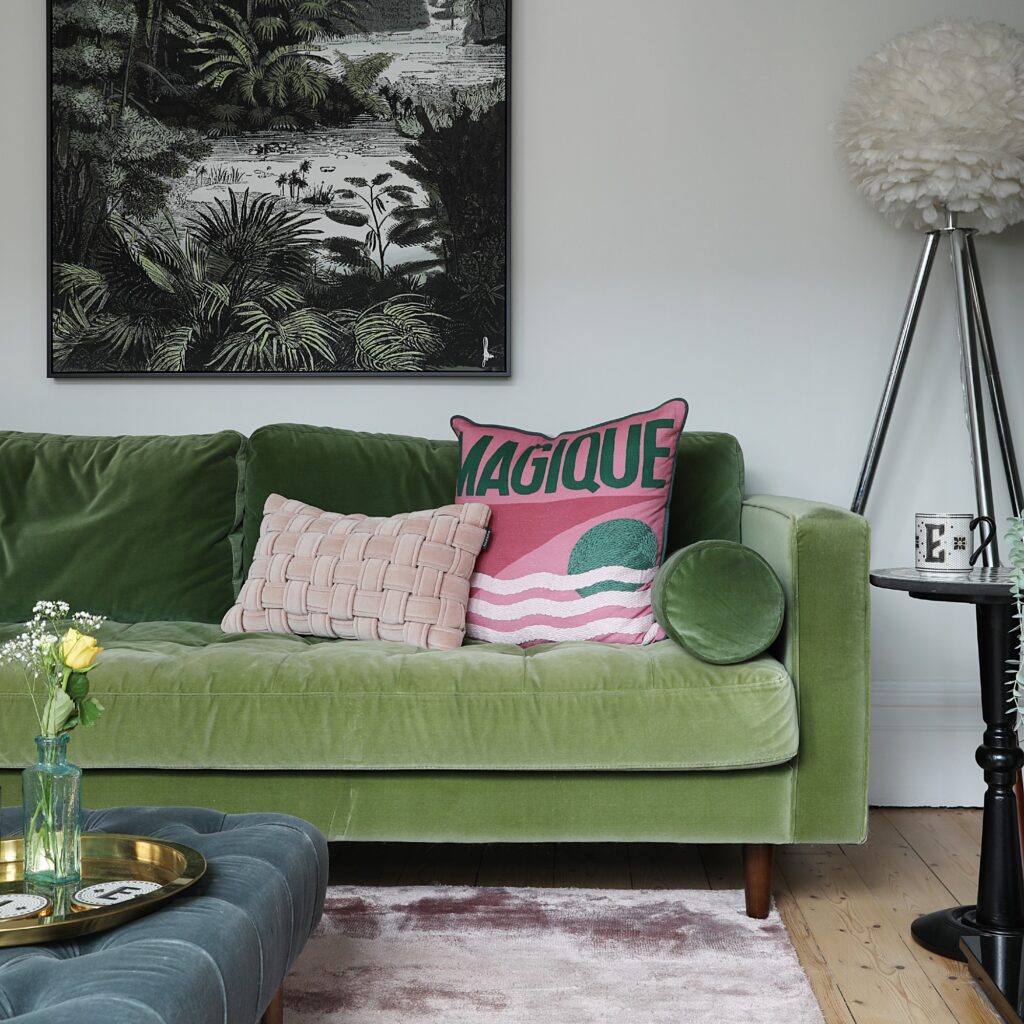
Less is definitely more when decorating a small living room. A minimalist approach helps the space feel larger, calmer, and more intentional.
Start by paring down your furniture to the essentials. Each piece should serve a purpose, and nothing should feel crowded or excessive. Stick to a simple color palette with two to three complementary tones, and let natural textures like wood, metal, or stone add warmth and depth.
Use hidden storage, like ottomans with compartments or side tables with drawers, to keep everyday clutter out of sight.
Incorporate open space as a design feature—resist the urge to fill every corner. White space helps each piece of furniture and decor stand out more.
Minimalist design isn’t about being stark or cold—it’s about curating a space that feels peaceful, functional, and beautiful.
15. Use Accent Lighting to Create Mood
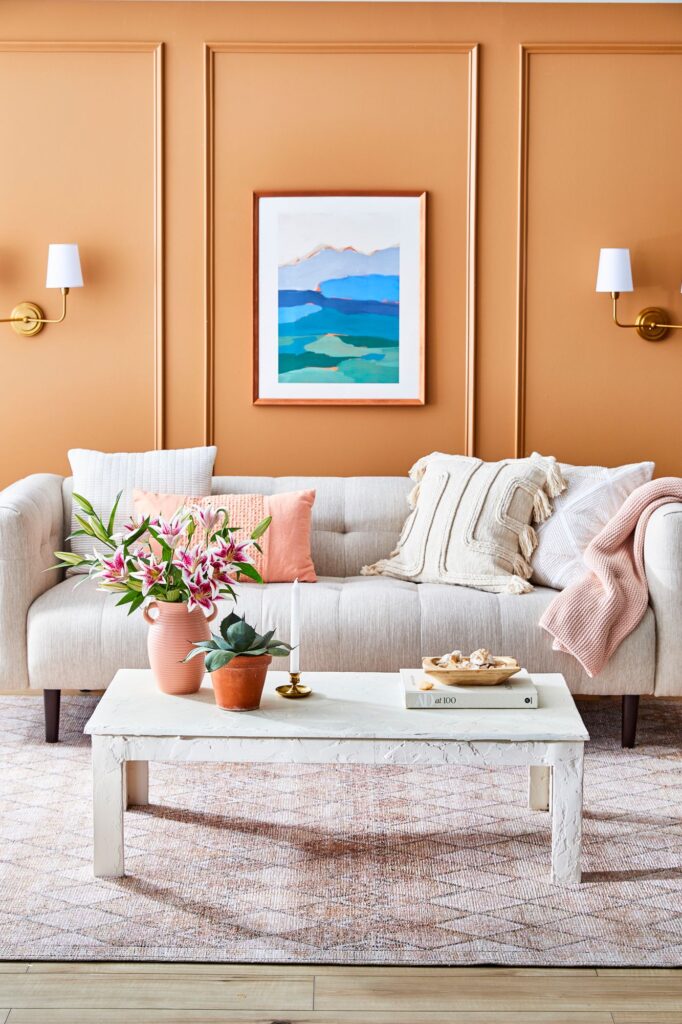
In a small space, lighting can dramatically affect how a room feels. Instead of relying solely on overhead lighting, use accent lighting to add layers, warmth, and mood.
Consider wall sconces to free up side table space or string lights to create a whimsical glow in a corner. A slim floor lamp tucked behind a chair or sofa can provide reading light without taking up much room.
Table lamps on consoles or floating shelves add coziness and charm. Choose warm white bulbs to make the room feel inviting and soft.
Use lighting to highlight architectural features, artwork, or decorative items. Even LED strips under a floating shelf can subtly elevate your decor.
By layering your lighting sources, you create a more dimensional and intimate space—perfect for relaxing or entertaining.
16. Use a Monochromatic Color Scheme
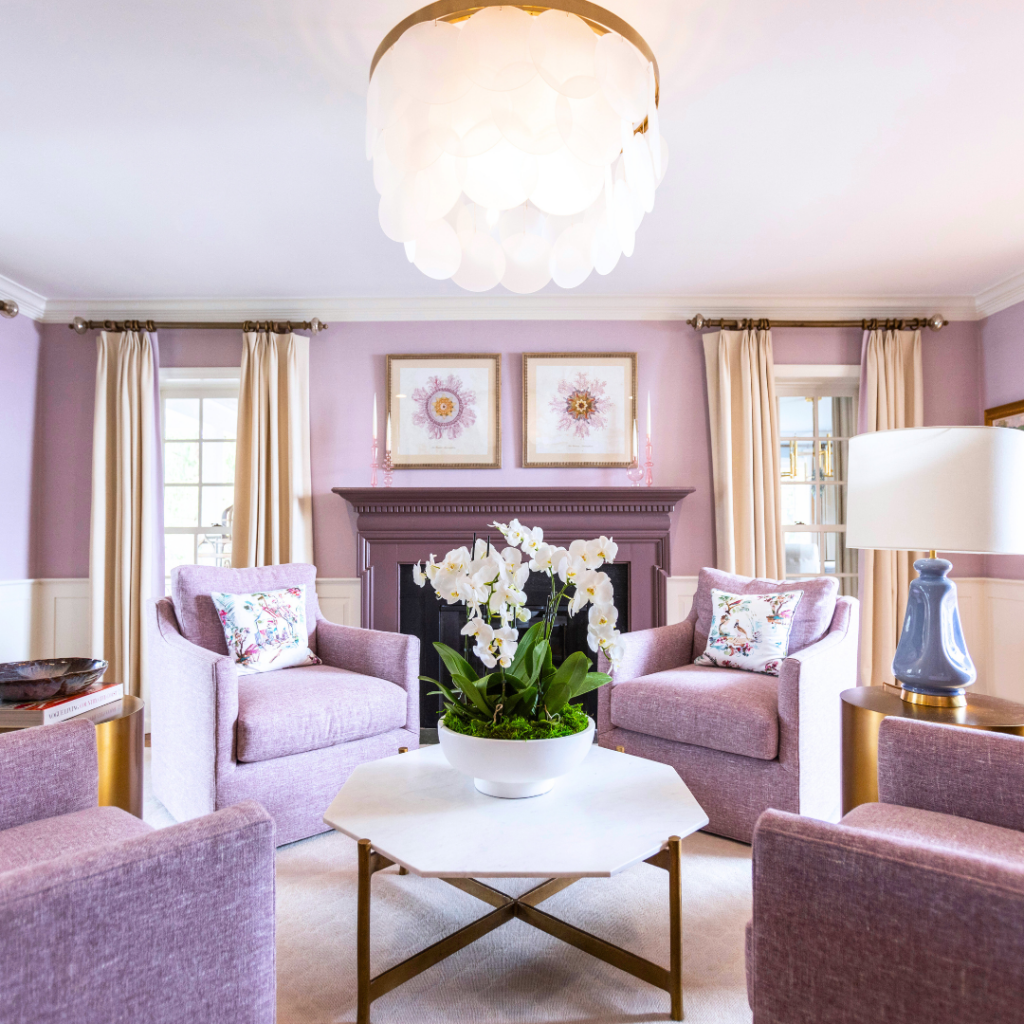
One easy way to make a small living room feel larger and more cohesive is to use a monochromatic color scheme. This doesn’t mean everything has to be the exact same shade, but keeping everything within a narrow color family helps reduce visual clutter.
For example, you might choose a palette of soft grays with variations in lightness and texture, or a warm range of beiges, creams, and taupes. This creates harmony and flow from one element to another.
Introduce contrast through materials—like matte and glossy finishes, or soft and coarse textures—rather than using bold, clashing colors.
Monochromatic color schemes also allow your furniture and accessories to shine without competing for attention. Add depth with subtle layering, like a throw in a deeper tone or a pillow with a hint of pattern.
This elegant, streamlined approach feels polished and serene—perfect for small living rooms where balance is key.
17. Add Personality with Unique Accents
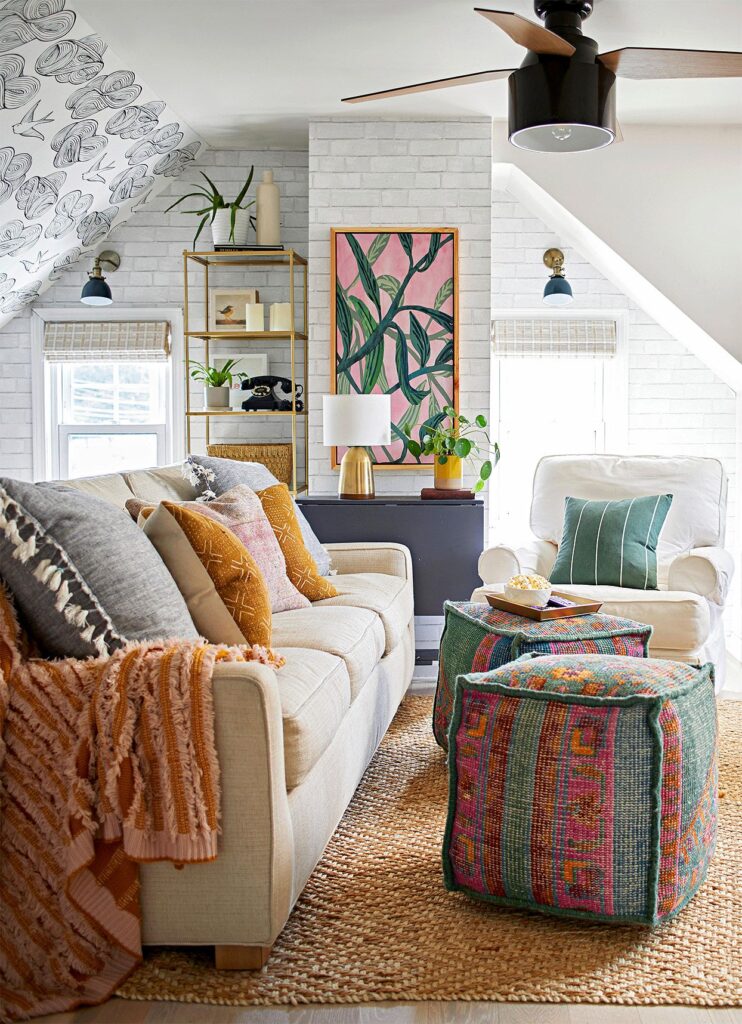
While keeping your space streamlined is important, it’s equally vital to add character and charm through carefully chosen accents.
Look for conversation-starting pieces that reflect your style—a vintage mirror, a sculptural vase, a bold pillow pattern, or a handmade wall hanging. These little details can bring your space to life.
Choose a few statement accessories rather than overwhelming the room with knick-knacks. A single bold accent chair or a striking coffee table centerpiece can be more impactful than a dozen tiny items.
Don’t be afraid to mix styles—blending modern with rustic, boho with traditional, or glam with minimal can result in a room that feels unique and personalized.
Your small living room may be compact, but with the right accents, it can be full of personality, charm, and soul.
Conclusion: Small Living Room, Big Design Potential
Decorating a small living room doesn’t mean limiting your style—it’s an invitation to get creative and intentional. With smart choices in color, furniture, lighting, and accessories, you can transform even the tiniest space into a beautiful, functional haven.
Whether you’re going for cozy and rustic, modern and minimal, or somewhere in between, these 17 ideas will help you maximize every inch and create a living room you absolutely love.
With thoughtful design, your small living room can become one of the most stylish and welcoming spots in your home.

